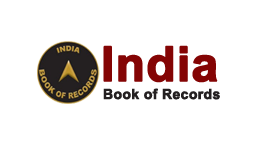Key 5 : MAKE SMART REVISION NOTES IN YOUR TEXTBOOK
Are your revision notes summaries of your textbooks? Avoid.
- Revision notes should not be in a separate notebook. You can use your textbook as the best place to mark the key points for later recollection. You are more likely to recall things marked in your textbook which you have seen everyday than notes made in a separate notebook.
- When you cannot solve a particular past question, mark with a highlighter pen just that portion of your textbook which you could not recall in solving that question. Write down on that page also the year in which that question appeared. Bookmark that page.
- Do not mark large chunks of your textbook but just the keywords on a few most essential pages of your textbook. Try to reconstruct the rest of your answers around them (a very useful process!).
- Use yellow sticky paper (post-it slips) to write any additional facts, formulae or notes from nearby pages which you need to remind yourself of for later recollection. As time is limited just before exams, don’t mark up everything, or every page–just some keywords and key terms on a few pages.
- Mind maps, graphic organizers and other visuals likewise help in better remembering and later recalling a chapter. Stick them on the relevant pages in your textbook, always keeping in mind that you must keep the number of book-marked pages to a minimum.
- Don’t waste time making immaculate nots that are like summaries of your chapters in a separate notebook for revision.
Are your revision notes summaries of your textbook?
 Revision notes serve a very useful purpose. They are excellent for reviewing important
facts and formulae on the night before exams when you cannot possibly go through
your entire textbook. They are also important for revising facts and formulae on
an on-going basis and serve as reference for recalling other useful connections
to theory and subject matter.
Revision notes serve a very useful purpose. They are excellent for reviewing important
facts and formulae on the night before exams when you cannot possibly go through
your entire textbook. They are also important for revising facts and formulae on
an on-going basis and serve as reference for recalling other useful connections
to theory and subject matter.
Most students tend to make their revision notes in a separate notebook or register
as more or less summaries of their textbooks and include every possible fact under
every possible topic. This is time consuming and not very useful in the final analysis.
Also, making extensive revision notes takes time away from the essential preparation
work. Many times students don’t even look at their own revision notes frequently
enough to justify the time spent in making them and sometimes they find it hard
to read their own handwriting, so they avoid reading them!
 Revision notes should be personal–for your needs only. You do not need to make revision
notes in a separate revision notebook. Instead, it is far more effective to mark
up essential sections of your textbook using a highlighter pen. You may also add
other essential key facts and formulae, mind maps, etc., right inside the pages
of your textbook by sticking notes on Post-It slips.
Revision notes should be personal–for your needs only. You do not need to make revision
notes in a separate revision notebook. Instead, it is far more effective to mark
up essential sections of your textbook using a highlighter pen. You may also add
other essential key facts and formulae, mind maps, etc., right inside the pages
of your textbook by sticking notes on Post-It slips.
The best way to construct your personalised set of revision notes is to make them
in the context of solving each past question. For example, if you find it difficult
to solve a past question on your own, mark the relevant portion of your textbook
that you needed to solve that particular question.
 It is like looking up a dictionary. When you look up a word in a dictionary, for
example, ‘ulterior’, you do not go through all pages with the letter ‘u’ but immediately
look for that exact word in the dictionary. Similarly, look up just that formula
or theory you needed to solve that particular question you had difficulty with solving
and highlight just that portion of your textbook with a highlighter pen. Do not
mark large chunks of information, just some keywords around which you can reconstruct
the rest.
It is like looking up a dictionary. When you look up a word in a dictionary, for
example, ‘ulterior’, you do not go through all pages with the letter ‘u’ but immediately
look for that exact word in the dictionary. Similarly, look up just that formula
or theory you needed to solve that particular question you had difficulty with solving
and highlight just that portion of your textbook with a highlighter pen. Do not
mark large chunks of information, just some keywords around which you can reconstruct
the rest.
In many subjects you will find examiners are looking for keywords only.
Separately, write on a Post-It slip those tips, keywords or formulae which are additionally needed and any mind maps that will help you recall that portion of theory. Stick this Post-It Note in your textbook, on the page most relevant to the question you have just solved. Now put a bookmark on this page.
In constructing your revision notes, the less pages you bookmark the better. If any information is valuable to solving that question on two or more pages, try to determine which is the main page and put information from other pages on this page by writing it on a Post-It note in a summary form.

Don’t forget to write in your textbook the year in which that question came and how many marks it was worth. You might find that several past questions require the same formulae, keywords or facts. Just keep on adding in pencil the year and the marks each question was worth on that particular page.
- Think of your revision notes marked in your textbooks and on the Post-It slips as the only notes you will study the night before examinations.
- These Post-It notes may include mind-maps, diagrams, graphic organisers and other memory aids for the last minute.
- A mind map is a diagram used to represent words, ideas, tasks, or other items linked to and arranged around a central key word or idea. Mind maps are particularly useful, especially if you want to summarize a number of connected thoughts or an entire chapter. You may need to use two or more Post-It slips for these. Since you do not want to read the entire book before exams, this is one quick way to summarise without having too many bookmarked pages.
- Also, the process of making a mind map or a graphic organiser is itself very valuable. First make these on a rough sheet, then fair out on one or more Post-It slips combined. You will find it is an exceptionally useful aid to your memory of an entire chapter!
- Flip through, read and re-read these bookmarked pages frequently, especially when you are tired and cannot engage in work that requires more effort.
- These methods will ensure that you will recollect more while using your precious revision hours productively to get the best marks on exam day.







